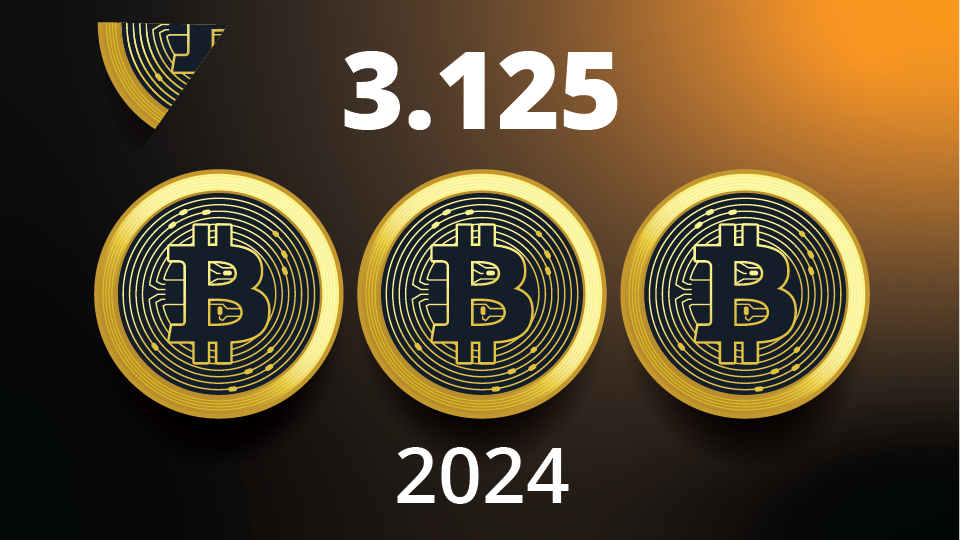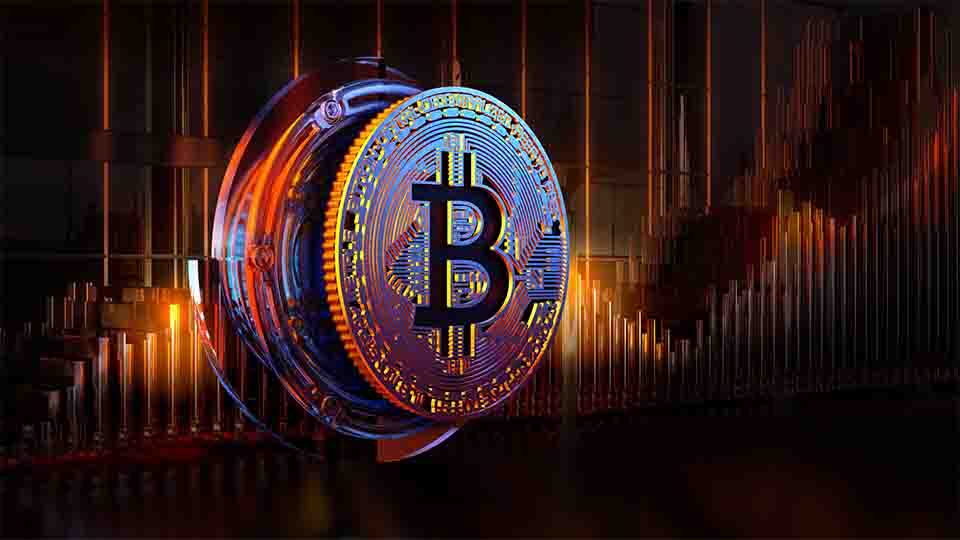Digital Assets Alpha: How We Approach Token Picking
September 20, 2022
Read Time 7 MIN
Please note that VanEck may have a position(s) in the digital asset(s) described below.
Identifying digital assets themes that are likely to capture the greatest performance over a multi–year period and then finding and investing in the best projects/tokens within those themes are key to the token selection process for our Digital Assets Alpha Strategy. Here we’ll offer an overview of our investment approach. Keep in mind that our holding period is multi–year. When we underwrite projects/tokens, we are often forecasting a roadmap of 5+ years and discounting the value back to today.
Token Selection Criteria
We look for the intersection of three primary characteristics within the broader Web3 token ecosystem: network effect, path to 100M daily active users and token value accrual.
Source: VanEck.
Network Effect (Moat)
Since most crypto projects are open source and can easily be forked, we think the only real moat is a project’s network effect. Most token projects have some form of a network effect, so the debate is whether it is weak or strong. Weak networks often have low barriers to entry, which often leads to weak monetization as the end users are mercenaries (they go where they can generate the highest returns). This is DeFi as a category today. We suspect many of the Web3 gaming guilds could be similar.
We generally categorize networks into the following:
- Sarnoff’s Law: value of a network is proportional to the number of viewers.
- Metcalfe’s Law: value of a network is proportional to square of number of connected users.
- Reed’s Law: value of a group–forming network is proportional to number and ease with which groups form within it (subgroups grow faster than sheer number of peer–to–peer participants).
We are primarily looking for crypto sub–sector categories that currently (or in the future) could look to embody either Metcalfe’s Law or Reed’s Law characteristics. We think the decentralized infrastructure as a category best captures this. Projects in this category are not tethered to any single smart–contract platform. Every incremental provider of that infrastructure service makes it cheaper and/or better for all other users within the network. Over time, this creates a barrier to entry for any new entrant, creating a moat.
Path to 100M—and Eventually 1B—Daily Active Users
Most blockchains and Web3 applications today have 500K – 1.5M daily active users and 2–5M weekly active users. Over 300M people in the world own crypto assets today. This should be the near term total addressable market (TAM) for most projects.
From our diligence and frequent conversations with many projects and teams, it is evident that most of them are not looking to solve problems or build unique experiences that could ultimately onboard the 300M crypto holders. They are instead solving bottlenecks and experiences for the existing 500K–1.5M daily active “power” users.
We are looking to exclusively invest in categories that can bring and thrive from the onboarding of the masses who own crypto and are most likely to do things on–chain. We think application specific blockchain projects are a perfect category for this. Projects in this category are looking to disrupt real world businesses by leveraging key trust minimization attributes of blockchain technology, while using tokens as a key human coordination tool.
Token Value Accrual
People often ask me whether “fundamentals” like cash flow and valuation matter for tokens. My short answer is that it has not mattered much in the past, but it will matter in the future. My reasoning being two–fold:
- The average market participant in the liquid token market in the past has been retail, and retail investors generally don’t focus on fundamentals. The marginal investor coming into the space over the next months and years is institutional or semi–institutional. These people have been formally trained in the traditional financial markets and are likely to apply those frameworks here.
- In most tokens we are likely to invest in, the value accrual to the token holder is likely to happen in the form of a “burn” (which is essentially a buyback). As these projects achieve scale and generate meaningful fees, these fees will be used to buy back and burn the outstanding token supply (float). In the future, fundamentals will lead to price appreciation/ depreciation from the technical pressures of buyback/burn.
Token designs are not standardized. We like tokens that act as a hybrid instrument serving a dual purpose. First, they act as a capital formation tool (like a stock or a bond) and represent property rights in a network. This creates tangible value. Second, this valuable asset is then used to scale a network by acting as a customer acquisition currency (through rewards, which people in crypto call “inflation”).
We think simplicity is key when looking at value accrual to the underlying token. Users pay fees to use a product, and those fees need to make their way to the token holder with minimal value leakage. Additionally, the token holder should have an incentive and reason to hold onto this value (fees) rather than sell it for something else. Oftentimes, the reason for holding onto the token is belief that the network will grow in the future (i.e., desire to retain rather than reduce % ownership of that network).
We also like token mechanisms that reward long–term behavior. This entails a user locking up their token ownership for extended periods of time to have greater influence on governance and potentially a bigger piece of the network economics. Token programmability is a key feature, something traditional instruments like stocks or bonds can’t do. We like projects that utilize this feature to create long term value that can be measured using cash flow–based methodologies like a discounted cash flow (DCF) analysis.
It is not a coincidence that two of the top 20 tokens in the market today are centralized exchange tokens. We think this category has done a great job on token value accrual. Users pay fees to trade, and some percentage of those fees are used to return value to the token holder via a burn mechanism. The same tokens that now have a cash–flow based “value” can now be used as a currency to drive and reward unique user behavior.
Lastly, we do not like complexity and Ponzi–nomics. Many projects have created tokens with complex and convoluted designs with interesting “game–theory” mechanisms. While these might be interesting for mental gymnastics, not many people in the world will truly understand them. Ultimately, people don’t want to own things in meaningful quantity if they don’t understand them. We believe the biggest token winners in the future will be the ones that are simplest to understand.
To summarize, based on the intersection of our three criteria, we believe the consensus layer tokens, application specific blockchain tokens, decentralized infrastructure tokens and centralized exchange tokens are the most attractive categories to invest in today.
Our View on Various Token Categories
| Consensus Layer | Execution Layer | Application specific blockchains | Defi | Decentralized Infrastructure | Gaming | Centralized Exchange (CEX) | Meme tokens | |
| Example Tokens | ETH, SOL, DOT, NEAR | OP, BOBA, STX, LRC,GNO, RON | HNT, RNDR, AKT, LPT | AAVE, COMP, dYdX, FXS, JOE, CVX, ZRX | GRT, AR, FIL, LINK, IMX, ENS, LDO, ENJ | MANA, SAND, APE, AXS, GMT,ILV | FTT, CRO, HT, LEO, KCS | DOGE, SHIB, ELON |
| Network Effect (Moat) | Strong | Medium | Strong | Medium | Strong | Weak | Medium | Weak |
| 100m+DAU (Daily Active Users) | Likely | Unlikely | Likely | Unlikely | Likely | Likely | Likely | Unlikely |
| Token Value Accrual | Clear | Unclear | Clear | Clear | Clear | Unclear | Clear | Unclear |
| Our View | Investible | Uninvestible today | Investible | Uninvestible today | Investible | Uninvestible today | Investible | Uninvestible |
Source: VanEck as of 6/30/2022. Past performance is no guarantee of future results.
Identifying the Best Projects/Tokens
Big total addressable market (TAM) + great product + committed mission–driven team and community + long liquidity runway to execute vision = Likely Winner.
We have three fundamental analysts and a node operations team who drive this process.
Among our four categories, we often start by mapping out all the projects/tokens within those categories and filtering for the projects that have demonstrated product–market fit. This often shrinks the investible universe meaningfully.
We then look for the team/community with the best execution thus far and begin our underwriting. We start by quantifying the scale of the market opportunity (TAM) and understanding the project’s roadmap vs. that of its peers. Ultimately, we try to ascribe a probability of success for the project.
We also come up with a framework to value the token in a bear, base and bull case. Every token is unique in how it captures fees and redistributes those fees to the token holder, so rather than standardize the revenue and cash flow, we standardize the terminal value multiple we ascribe to the project. The goal of this exercise is to establish a lower and upper bound for the token price, so we can use it for position sizing and risk–management.
Our data analysts help map and build dashboards to track key KPIs to the underlying token value. When the KPIs and token prices decouple, we look to change position sizing. Additionally, our Europe–based trader uses the various on–chain tools available off the shelf to model token vesting schedules and forecast potential investor behavior.
As many venture capitalists vest their tokens, they are likely profit takers/sellers in the current market environment. We have been deliberate in remaining patient as we establish positions in projects on which we are fundamentally bullish but see a potential supply overhang in the future.
To receive more Digital Assets insights, sign up in our subscription center.
Related Topics
Related Insights
DISCLOSURES
Coin Definitions
Ethereum (ETH) is a decentralized, open–source blockchain with smart contract functionality. Ether is the native cryptocurrency of the platform. Amongst cryptocurrencies, Ether is second only to Bitcoin in market capitalization.
Solana (SOL) is a public blockchain platform. It is open–source and decentralized, with consensus achieved using proof of stake and proof of history. Its internal cryptocurrency is SOL.
Polkadot (DOT) is a sharded heterogeneous multi–chain architecture which enables external networks as well as customized layer one “parachains” to communicate, creating an interconnected internet of blockchains.
NEAR Protocol (NEAR) is a decentralized development platform that uses a Proof–of–Stake (PoS) consensus mechanism and will eventually feature a sharded architecture to scale transaction throughput.
Optimism (OP) Optimism is a low–cost and lightning–fast Ethereum L2 blockchain.
Boba Network (BOBA) is a Layer–2 optimistic rollup scaling solution currently built on Ethereum.
Stacks (STX) provides software for internet ownership, which includes infrastructure and developer tools to power a computing network and ecosystem for decentralized applications.
Looping (LRC) is an open protocol for building high–performance, order book decentralized exchanges on Ethereum.
Gnosis (GNO) builds new market mechanisms for open finance with product lines to create, trade, and hold crypto assets.
Ronin (RON) is an Ethereum sidechain built specifically for gaming. Ronin is operated by validators which are appointed by Sky Mavis, the core developers of Axie Infinity.
Helium (HNT) is a decentralized, open wireless network built on a new blockchain for the physical world. It relies on a novel type of work called Proof of Coverage, and a new consensus algorithm (based on HoneyBadger BFT).
Render Token (RNDR) is an ERC–20 compatible utility token used to pay for animation, motion graphics and VFX rendering on the distributed RNDR Network, which is a peer–to–peer GPU compute network that connects creators in need of additional computation power for rendering their scenes, to providers that receive RNDR tokens for their GPU power.
Akash Network (AKT) is a decentralized peer–to–peer marketplace for cloud compute and provides a fast, efficient, and low–cost application deployment solution.
Livepeer (LPT) is an open video infrastructure, enabling developers to build video streaming applications.
Aave (AAVE) is an open–source and non–custodial protocol to earn interest on deposits and borrow assets with a variable or stable interest rate.
Compound (COMP) is a lending platform built on Ethereum that enables users to permissionlessly borrow or lend from a pool of assets.
dYdX (DYDX) is a decentralized exchange built on the Ethereum network delivering key financial instruments to users such as perpetuals, margin and spot trading, as well as lending and borrowing.
Frax Share (FXS) attempts to be the first fractional–algorithmic stablecoin protocol to implement design principles of both collateralized and algorithmic stablecoins.
Trader Joe (JOE) is a decentralized trading platform on the Avalanche network that combines DEX services with DeFi lending to offer leveraged Trading.
Convex Finance (CVX) is a DeFi protocol that allows Curve liquidity providers to earn a share of trading fees on Curve without staking liquidity there.
0x (ZRX) is a permissionless protocol to facilitate trading of Ethereum based tokens including ERC–20, ERC–721, and other Ethereum standards.
The Graph (GRT) is a protocol for indexing and querying data from blockchains, starting with Ethereum.
Arweave (AR) is a data storage protocol built on blockweave technology.
Filecoin (FIL) is a decentralized data storage network built by Protocol Labs that allows users to sell their excess storage on an open platform.
Chainlink (LINK) is a decentralized oracle network. It aims to serve as a middleware between smart contracts on smart contracting platforms and external data sources, allowing smart contracts to securely access off–chain data feeds.
Immutable X (IMX) operates as the first–ever Layer 2 scaling solution for NFTs on the Ethereum blockchain.
Ethereum Name Service (ENS) is a distributed and open–source naming system that maps human–readable names to machine–readable identifiers like cryptocurrency addresses, metadata and content hashes.
Lido DAO (LDO) is a liquid staking solution for Ethereum and other proof of stake chains. This allows users to stake their tokens without having to lock assets or maintain staking infrastructure.
Enjin Coin (ENJ) is a Singapore–based technology company that provides services for building gaming communities as well as services for blockchain game developers.
Decentraland (MANA) is building a decentralized, blockchain–based virtual world for users to create, experience and monetize content and applications.
The Sandbox (SAND) is a virtual world where players can build, own, and monetize their gaming experiences using non–fungible tokens (NFTs) and $SAND, the platform’s utility token.
Apecoin (APE) is a governance and utility token that grants its holders access to the ApeCoin DAO, a decentralized community of Web3 builders.
Axie Infinity (AXS) is a "play–to–earn" pet training game and virtual world built on the Ethereum blockchain.
STEPN (GMT) is a Web3 lifestyle app with inbuilt Game–Fi and Social–Fi elements.
Illuvium (ILV) is a decentralized game studio that merges the worlds of gaming and cryptocurrency.
FTX Token (FTT) is the native token designed for the cryptocurrency derivatives exchange FTX. It has numerous uses designed to benefit its users and increase network effects around the platform.
Cronos (CRO) is the native token of Crypto.com’s all–in–one cryptocurrency platform and the Crypto.org Chain.
Huobi Token (HT) is an ecosystem token launched by Huobi Global, offering benefits such as trading fee and margin discounts and access to certain trading events.
Unus Sed Leo (LEO) is a utility token for the iFinex ecosystem.
KuCoin (KCS) is a crypto asset exchange platform aiming to offer low–cost trading for users.
DogeCoin (DOGE) is a playful cryptocurrency popularized by adopting the Shiba Inu internet meme.
Shiba Inu (SHIB) is an ERC–20 token named after the Shiba Inu dog, which serves as the community's symbol currency.
Dogelon Mars (ELON) is a doge–themed token project that aims to replicate the success of Dogecoin (DOGE) while referencing Elon Musk's vision to colonize Mars.
Risk Considerations
Cryptocurrency is a digital representation of value that functions as a medium of exchange, a unit of account, or a store of value, but it does not have legal tender status. Cryptocurrencies are sometimes exchanged for U.S. dollars or other currencies around the world, but they are not generally backed or supported by any government or central bank. Their value is completely derived by market forces of supply and demand, and they are more volatile than traditional currencies. The value of cryptocurrency may be derived from the continued willingness of market participants to exchange fiat currency for cryptocurrency, which may result in the potential for permanent and total loss of value of a particular cryptocurrency should the market for that cryptocurrency disappear. Cryptocurrencies are not covered by either FDIC or SIPC insurance. Legislative and regulatory changes or actions at the state, federal, or international level may adversely affect the use, transfer, exchange, and value of cryptocurrency.
Investing in cryptocurrencies comes with a number of risks, including volatile market price swings or flash crashes, market manipulation, and cybersecurity risks. In addition, cryptocurrency markets and exchanges are not regulated with the same controls or customer protections available in equity, option, futures, or foreign exchange investing. There is no assurance that a person who accepts a cryptocurrency as payment today will continue to do so in the future.
Investors should conduct extensive research into the legitimacy of each individual cryptocurrency, including its platform, before investing. The features, functions, characteristics, operation, use and other properties of the specific cryptocurrency may be complex, technical, or difficult to understand or evaluate. The cryptocurrency may be vulnerable to attacks on the security, integrity or operation, including attacks using computing power sufficient to overwhelm the normal operation of the cryptocurrency’s blockchain or other underlying technology. Some cryptocurrency transactions will be deemed to be made when recorded on a public ledger, which is not necessarily the date or time that a transaction may have been initiated.
- Investors must have the financial ability, sophistication and willingness to bear the risks of an investment and a potential total loss of their entire investment in cryptocurrency.
- An investment in cryptocurrency is not suitable or desirable for all investors.
- Cryptocurrency has limited operating history or performance.
- Fees and expenses associated with a cryptocurrency investment may be substantial.
There may be risks posed by the lack of regulation for cryptocurrencies and any future regulatory developments could affect the viability and expansion of the use of cryptocurrencies. Investors should conduct extensive research before investing in cryptocurrencies.
Information provided by Van Eck is not intended to be, nor should it be construed as financial, tax or legal advice. It is not a recommendation to buy or sell an interest in cryptocurrencies.
VAN ECK ABSOLUTE RETURN ADVISERS CORPORATION (“VEARA”) IS A MEMBER OF NFA AND IS SUBJECT TO NFA’S REGULATORY OVERSIGHT AND EXAMINATIONS. VEARA HAS ENGAGED OR MAY ENGAGE IN UNDERLYING OR SPOT VIRTUAL CURRENCY TRANSACTIONS IN A COMMODITY POOL. ALTHOUGH NFA HAS JURISDICTION OVER VEARA AND ITS COMMODITY POOL, YOU SHOULD BE AWARE THAT NFA DOES NOT HAVE REGULATORY OVERSIGHT AUTHORITY FOR UNDERLYING OR SPOT MARKET VIRTUAL CURRENCY PRODUCTS OR TRANSACTIONS OR VIRTUAL CURRENCY EXCHANGES, CUSTODIANS OR MARKETS. YOU SHOULD ALSO BE AWARE THAT GIVEN CERTAIN MATERIAL CHARACTERISTICS OF THESE PRODUCTS, INCLUDING LACK OF A CENTRALIZED PRICING SOURCE AND THE OPAQUE NATURE OF THE VIRTUAL CURRENCY MARKET, THERE CURRENTLY IS NO SOUND OR ACCEPTABLE PRACTICE FOR NFA TO ADEQUATELY VERIFY THE OWNERSHIP AND CONTROL OF A VIRTUAL CURRENCY OR THE VALUATION ATTRIBUTED TO A VIRTUAL CURRENCY BY VEARA.
© Van Eck Securities Corporation, Distributor, a wholly owned subsidiary of Van Eck Associates Corporation.
Related Funds
DISCLOSURES
Coin Definitions
Ethereum (ETH) is a decentralized, open–source blockchain with smart contract functionality. Ether is the native cryptocurrency of the platform. Amongst cryptocurrencies, Ether is second only to Bitcoin in market capitalization.
Solana (SOL) is a public blockchain platform. It is open–source and decentralized, with consensus achieved using proof of stake and proof of history. Its internal cryptocurrency is SOL.
Polkadot (DOT) is a sharded heterogeneous multi–chain architecture which enables external networks as well as customized layer one “parachains” to communicate, creating an interconnected internet of blockchains.
NEAR Protocol (NEAR) is a decentralized development platform that uses a Proof–of–Stake (PoS) consensus mechanism and will eventually feature a sharded architecture to scale transaction throughput.
Optimism (OP) Optimism is a low–cost and lightning–fast Ethereum L2 blockchain.
Boba Network (BOBA) is a Layer–2 optimistic rollup scaling solution currently built on Ethereum.
Stacks (STX) provides software for internet ownership, which includes infrastructure and developer tools to power a computing network and ecosystem for decentralized applications.
Looping (LRC) is an open protocol for building high–performance, order book decentralized exchanges on Ethereum.
Gnosis (GNO) builds new market mechanisms for open finance with product lines to create, trade, and hold crypto assets.
Ronin (RON) is an Ethereum sidechain built specifically for gaming. Ronin is operated by validators which are appointed by Sky Mavis, the core developers of Axie Infinity.
Helium (HNT) is a decentralized, open wireless network built on a new blockchain for the physical world. It relies on a novel type of work called Proof of Coverage, and a new consensus algorithm (based on HoneyBadger BFT).
Render Token (RNDR) is an ERC–20 compatible utility token used to pay for animation, motion graphics and VFX rendering on the distributed RNDR Network, which is a peer–to–peer GPU compute network that connects creators in need of additional computation power for rendering their scenes, to providers that receive RNDR tokens for their GPU power.
Akash Network (AKT) is a decentralized peer–to–peer marketplace for cloud compute and provides a fast, efficient, and low–cost application deployment solution.
Livepeer (LPT) is an open video infrastructure, enabling developers to build video streaming applications.
Aave (AAVE) is an open–source and non–custodial protocol to earn interest on deposits and borrow assets with a variable or stable interest rate.
Compound (COMP) is a lending platform built on Ethereum that enables users to permissionlessly borrow or lend from a pool of assets.
dYdX (DYDX) is a decentralized exchange built on the Ethereum network delivering key financial instruments to users such as perpetuals, margin and spot trading, as well as lending and borrowing.
Frax Share (FXS) attempts to be the first fractional–algorithmic stablecoin protocol to implement design principles of both collateralized and algorithmic stablecoins.
Trader Joe (JOE) is a decentralized trading platform on the Avalanche network that combines DEX services with DeFi lending to offer leveraged Trading.
Convex Finance (CVX) is a DeFi protocol that allows Curve liquidity providers to earn a share of trading fees on Curve without staking liquidity there.
0x (ZRX) is a permissionless protocol to facilitate trading of Ethereum based tokens including ERC–20, ERC–721, and other Ethereum standards.
The Graph (GRT) is a protocol for indexing and querying data from blockchains, starting with Ethereum.
Arweave (AR) is a data storage protocol built on blockweave technology.
Filecoin (FIL) is a decentralized data storage network built by Protocol Labs that allows users to sell their excess storage on an open platform.
Chainlink (LINK) is a decentralized oracle network. It aims to serve as a middleware between smart contracts on smart contracting platforms and external data sources, allowing smart contracts to securely access off–chain data feeds.
Immutable X (IMX) operates as the first–ever Layer 2 scaling solution for NFTs on the Ethereum blockchain.
Ethereum Name Service (ENS) is a distributed and open–source naming system that maps human–readable names to machine–readable identifiers like cryptocurrency addresses, metadata and content hashes.
Lido DAO (LDO) is a liquid staking solution for Ethereum and other proof of stake chains. This allows users to stake their tokens without having to lock assets or maintain staking infrastructure.
Enjin Coin (ENJ) is a Singapore–based technology company that provides services for building gaming communities as well as services for blockchain game developers.
Decentraland (MANA) is building a decentralized, blockchain–based virtual world for users to create, experience and monetize content and applications.
The Sandbox (SAND) is a virtual world where players can build, own, and monetize their gaming experiences using non–fungible tokens (NFTs) and $SAND, the platform’s utility token.
Apecoin (APE) is a governance and utility token that grants its holders access to the ApeCoin DAO, a decentralized community of Web3 builders.
Axie Infinity (AXS) is a "play–to–earn" pet training game and virtual world built on the Ethereum blockchain.
STEPN (GMT) is a Web3 lifestyle app with inbuilt Game–Fi and Social–Fi elements.
Illuvium (ILV) is a decentralized game studio that merges the worlds of gaming and cryptocurrency.
FTX Token (FTT) is the native token designed for the cryptocurrency derivatives exchange FTX. It has numerous uses designed to benefit its users and increase network effects around the platform.
Cronos (CRO) is the native token of Crypto.com’s all–in–one cryptocurrency platform and the Crypto.org Chain.
Huobi Token (HT) is an ecosystem token launched by Huobi Global, offering benefits such as trading fee and margin discounts and access to certain trading events.
Unus Sed Leo (LEO) is a utility token for the iFinex ecosystem.
KuCoin (KCS) is a crypto asset exchange platform aiming to offer low–cost trading for users.
DogeCoin (DOGE) is a playful cryptocurrency popularized by adopting the Shiba Inu internet meme.
Shiba Inu (SHIB) is an ERC–20 token named after the Shiba Inu dog, which serves as the community's symbol currency.
Dogelon Mars (ELON) is a doge–themed token project that aims to replicate the success of Dogecoin (DOGE) while referencing Elon Musk's vision to colonize Mars.
Risk Considerations
Cryptocurrency is a digital representation of value that functions as a medium of exchange, a unit of account, or a store of value, but it does not have legal tender status. Cryptocurrencies are sometimes exchanged for U.S. dollars or other currencies around the world, but they are not generally backed or supported by any government or central bank. Their value is completely derived by market forces of supply and demand, and they are more volatile than traditional currencies. The value of cryptocurrency may be derived from the continued willingness of market participants to exchange fiat currency for cryptocurrency, which may result in the potential for permanent and total loss of value of a particular cryptocurrency should the market for that cryptocurrency disappear. Cryptocurrencies are not covered by either FDIC or SIPC insurance. Legislative and regulatory changes or actions at the state, federal, or international level may adversely affect the use, transfer, exchange, and value of cryptocurrency.
Investing in cryptocurrencies comes with a number of risks, including volatile market price swings or flash crashes, market manipulation, and cybersecurity risks. In addition, cryptocurrency markets and exchanges are not regulated with the same controls or customer protections available in equity, option, futures, or foreign exchange investing. There is no assurance that a person who accepts a cryptocurrency as payment today will continue to do so in the future.
Investors should conduct extensive research into the legitimacy of each individual cryptocurrency, including its platform, before investing. The features, functions, characteristics, operation, use and other properties of the specific cryptocurrency may be complex, technical, or difficult to understand or evaluate. The cryptocurrency may be vulnerable to attacks on the security, integrity or operation, including attacks using computing power sufficient to overwhelm the normal operation of the cryptocurrency’s blockchain or other underlying technology. Some cryptocurrency transactions will be deemed to be made when recorded on a public ledger, which is not necessarily the date or time that a transaction may have been initiated.
- Investors must have the financial ability, sophistication and willingness to bear the risks of an investment and a potential total loss of their entire investment in cryptocurrency.
- An investment in cryptocurrency is not suitable or desirable for all investors.
- Cryptocurrency has limited operating history or performance.
- Fees and expenses associated with a cryptocurrency investment may be substantial.
There may be risks posed by the lack of regulation for cryptocurrencies and any future regulatory developments could affect the viability and expansion of the use of cryptocurrencies. Investors should conduct extensive research before investing in cryptocurrencies.
Information provided by Van Eck is not intended to be, nor should it be construed as financial, tax or legal advice. It is not a recommendation to buy or sell an interest in cryptocurrencies.
VAN ECK ABSOLUTE RETURN ADVISERS CORPORATION (“VEARA”) IS A MEMBER OF NFA AND IS SUBJECT TO NFA’S REGULATORY OVERSIGHT AND EXAMINATIONS. VEARA HAS ENGAGED OR MAY ENGAGE IN UNDERLYING OR SPOT VIRTUAL CURRENCY TRANSACTIONS IN A COMMODITY POOL. ALTHOUGH NFA HAS JURISDICTION OVER VEARA AND ITS COMMODITY POOL, YOU SHOULD BE AWARE THAT NFA DOES NOT HAVE REGULATORY OVERSIGHT AUTHORITY FOR UNDERLYING OR SPOT MARKET VIRTUAL CURRENCY PRODUCTS OR TRANSACTIONS OR VIRTUAL CURRENCY EXCHANGES, CUSTODIANS OR MARKETS. YOU SHOULD ALSO BE AWARE THAT GIVEN CERTAIN MATERIAL CHARACTERISTICS OF THESE PRODUCTS, INCLUDING LACK OF A CENTRALIZED PRICING SOURCE AND THE OPAQUE NATURE OF THE VIRTUAL CURRENCY MARKET, THERE CURRENTLY IS NO SOUND OR ACCEPTABLE PRACTICE FOR NFA TO ADEQUATELY VERIFY THE OWNERSHIP AND CONTROL OF A VIRTUAL CURRENCY OR THE VALUATION ATTRIBUTED TO A VIRTUAL CURRENCY BY VEARA.
© Van Eck Securities Corporation, Distributor, a wholly owned subsidiary of Van Eck Associates Corporation.




